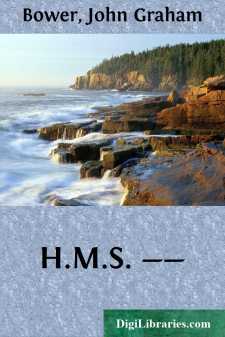Categories
- Antiques & Collectibles 13
- Architecture 36
- Art 48
- Bibles 22
- Biography & Autobiography 813
- Body, Mind & Spirit 142
- Business & Economics 28
- Children's Books 15
- Children's Fiction 12
- Computers 4
- Cooking 94
- Crafts & Hobbies 4
- Drama 346
- Education 46
- Family & Relationships 57
- Fiction 11828
- Games 19
- Gardening 17
- Health & Fitness 34
- History 1377
- House & Home 1
- Humor 147
- Juvenile Fiction 1873
- Juvenile Nonfiction 202
- Language Arts & Disciplines 88
- Law 16
- Literary Collections 686
- Literary Criticism 179
- Mathematics 13
- Medical 41
- Music 40
- Nature 179
- Non-Classifiable 1768
- Performing Arts 7
- Periodicals 1453
- Philosophy 64
- Photography 2
- Poetry 896
- Political Science 203
- Psychology 42
- Reference 154
- Religion 513
- Science 126
- Self-Help 84
- Social Science 81
- Sports & Recreation 34
- Study Aids 3
- Technology & Engineering 59
- Transportation 23
- Travel 463
- True Crime 29
H.M.S. --
Description:
Excerpt
"1923."
[The following is the description by Professor J. Scott, F.R.S., of his recent Airship Journey across the old Bed of the North Sea. July 1, 1923.]
It is perhaps unnecessary for me to state the objects and purpose of my journey of last week, as it would be false modesty in me not to recognise the great interest taken by the geologic and antiquarian worlds in my proposed enterprise. For the benefit, however, of those for whose intelligence the so-called "Popular" geologic works are compiled, I will recapitulate some points which are ancient history to my instructed readers.
The winter of 1922 witnessed the greatest geologic change in the earth's surface since the last of the Glacial epochs. Into the causes and general results of this change I do not propose to enter, beyond mentioning my opinion that the theory propounded by Professor Middleton (a theory designed only for one purpose—that of attempting to throw doubt on the data and reasoning of my first monograph on the subject) is not only childish, but based on a fallacy.
I will confine myself to the results as they affected this country and the continent of Europe, of which it is now a prolongation or headland—not, as the Daily Press erroneously labels it, a peninsula.
The total change in elevation of the land is now calculated at 490 feet 7 inches, but more accurate measurements are still being taken. This great change brings us back to a geologic age when man and mammoth co-existed in the primeval forest of Cromer, and when the Dogger Bank was a great plain where wild beasts roamed and palæolithic man left the traces of his industry in the bones and shaped flints which we hope soon to collect in quantities from the mud and ooze with which thousands of years of sea-action has covered them.
I had little difficulty in obtaining Admiralty permission to accompany the Captain of a Naval Airship on one of his regular patrol trips across the great expanse of mud which was once the North Sea.
Of course in the six months since the departure of the Ocean from the new lands, the district has been regularly patrolled by the Navy, but the air is as yet the only safe route by which to cross it. It will be some time, perhaps years, before the surface becomes safe to walk on, although the Government is plentifully sprinkling grass and other seeds from all passing aircraft. In the large and powerful airship in which I was privileged to travel, we had every modern device for enabling a close inspection of the surface to be taken. A trail-rope was used when it was desired to drift slowly or to actually hover over some of the points of interest which we observed on our passage.
The day was fine and clear, and I could not have wished for better weather conditions when we rose over Dover and started the main engines on a north-easterly course. As no maps can yet be compiled of the New Lands (as popular clamour has most inaccurately labelled them) owing to their dangerous surface, we navigated by the old Admiralty charts, marked in depths of water, and I was amused at having the Varne and Goodwin "shoals" pointed out to me—the objects indicated being long ridges of sandy hills rising from the shining surface of the Channel bed....


